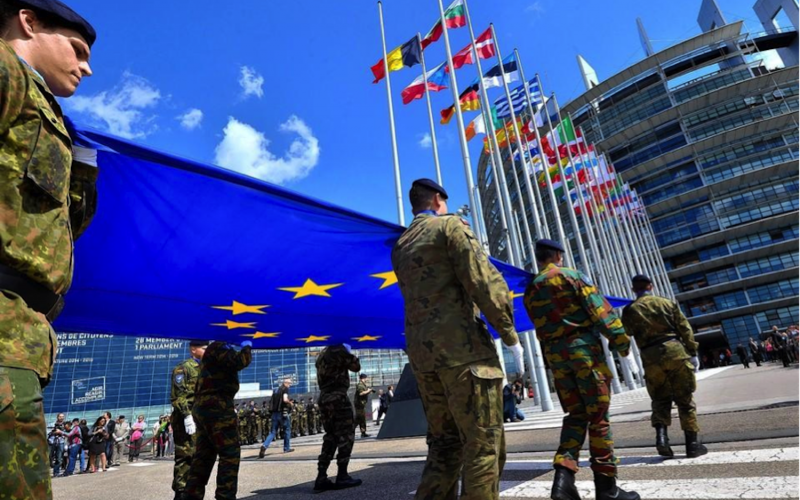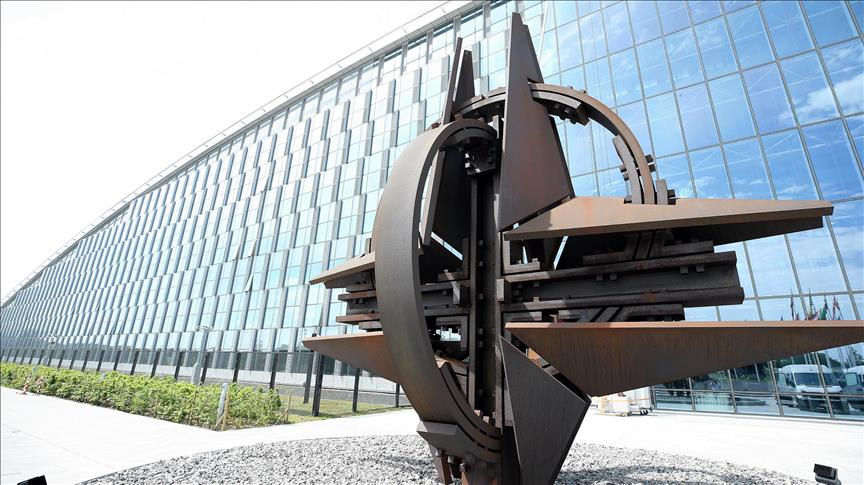Fighting Underneath the EU Banner
- Andrew Gaboury

- Apr 28, 2022
- 5 min read
With the war in Ukraine destroying over 70 years of European security architecture, the rush to create something new in its wake is intensifying. Countries like Germany, Denmark, Sweden, Finland, Romania, Latvia, France and the United Kingdom have all announced defence expenditure increases. We have previously discussed Germany’s announced increase in defence spending and what this could mean for that country and the continent. With so many countries vowing to increase defence spending, what will European security cooperation and integration look like going forward?

The current Common Defence and Security Policy (CDSP) of the European Union is designed for a world that has faded away, envisioning the EU as the coordinator of a huge jumble of agencies, committees, and councils. The result is that no one organisation decides EU policy; everything is negotiation between an endless mass of stakeholders. With security and defence policy requiring the assent of all EU member states, the few documents that are passed are too often timid, unspecific, and unrealistic. In an effort to reach unanimity, discussion of threats ail to get into specifics regarding defence capabilities, weapons systems interoperability, or sacrifices required from member states. Specific threats like China and Russia are not mentioned, neglected in favour of a primacy on nebulous security-adjacent areas like human security, climate security, and the effects of globalisation. For all these reasons, the war in Ukraine is a shock to this system and one that will reverberate forward.
With so many countries vowing to increase defence spending, what will European security cooperation and integration look like going forward?
In contrast to the European Union, while Article 42 of the Lisbon Treaty has a clause requiring “other EU countries to come to the support and aid, with all possible means, of a member state under armed attack,” NATO has a much clearer mission. Originating as an alliance of Western European countries to defend against Soviet attack, NATO has expanded since the end of the Cold War to include formerly communist and even former Soviet states. The main principle of NATO is collective defence and security: an attack on any NATO member is regarded as an attack on all. While this principle has only been tested in the wake of the September 11 attacks on the United States in 2001, this guarantee is considered sacrosanct. In addition to having a clearer mandate than the EU, NATO has a history of military action. Starting in the mid-1990s, NATO began operating militarily in the Balkans and Afghanistan. Member states, in cooperation with the United States, also operated in Iraq and Libya. NATO also routinely exercises and rotates troops throughout eastern Europe.

In addition to those differences already listed, the issue of membership further separates the EU and NATO. The US is a major NATO member, as are Canada and Turkey, creating a potential for formidable military strength. While the EU has countries like Sweden and Finland that are not NATO members, it simply lacks the resources provided by these three powerful non-European countries. One major downside of NATO operations, however, is reliance on American military logistics. The US does the lion’s share of transportation, intelligence gathering, and equipment development. Each country also has its own defence industry, national priorities, and domestic populations to placate. This sometimes prevents unanimity within NATO, just as it does in the EU. Many former Warsaw Pact states such as Romania and Bulgaria still use Soviet era equipment for everything from armoured vehicles to aircraft and firearms.
With European countries now taking a greater interest in defence spending and security policy, how this enthusiasm will materialise and affect European defence policy remains to be seen. There are currently three possibilities going forward:
1. Deep European Military Integration
The German return to active military engagement will put Berlin in the driver’s seat for European military matters. Countries like the Netherlands, Poland, Denmark, and the Baltic States, will follow the lead of the Germans and begin a process of unit integration across national boundaries. Regional training facilities will develop outside of the parochial national interests of individual countries. Military acquisition will be streamlined with purchases based on standardisation and being done for the continent as a whole, bypassing the requirements that some nations have on domestic production alone for military purchases. Training and equipment become standardised, easing the burden on supplies and spare parts. The EU develops a realistic defence and security policy that looks to Russia as a conventional military threat and lists hotspots like the Balkans, Turkey, and the Middle East as security concerns for Europe. Europe develops independent transportation and power projection capabilities in the form of transport aircraft and a naval force that can move European forces from the continent to Africa and the Middle East.
2. Deeper Integration but Still Divided
Many states may resent Berlin’s claim to leadership of European military power. Traditional rivals like France and Italy may push back and choose to retain their own independent capability and policy. France has a recent history of military deployments to West and Central Africa independent of NATO or the EU. Historically, France has previously demonstrated a will to assert its independence on security, including dropping out of NATO in 1966. It would return later, but the French precedent for leaving alliances has been established.
Britain has described itself as a unique nation of Europe, the heir to empire with an international posture independent of continental concerns. The United Kingdom has left the European Union but not NATO. Both Sweden and Finland are EU members but, sharing a direct border with Russia, have chosen a neutral military posture. Similarly, Ireland, Austria, and Switzerland are not NATO members precisely because they believe neutrality is a better guarantor of security. Recent developments in Finland point to an imminent Finnish application to join NATO. This would have serious repercussions for European defence. We are much closer to the beginning of the crisis in Ukraine than the end; some states may change their policies regarding Russia or national defence. This could mean a greater integration in some areas but less so in others. Countries could agree to certain policies on paper but not follow with the spending required or make the necessary changes to their armed forces. This would mean some integration, perhaps some increases in capabilities on the margins, but nothing of great relevance.
We are much closer to the beginning of the crisis in Ukraine than the end; some states may change their policies regarding Russia or national defence.
3. Status Quo Remains
Germany has announced major changes to its security policies but we haven’t seen anything concrete yet. Similarly, many states have announced increases without actually having done anything. No new country has been admitted to NATO or the EU since the Russian invasion of Ukraine began even if several have announced their intention to do so. The Russian threat could die down shortly if the military action there settles into a stalemate or, even, an outright Russian withdrawal. The fear of Russia may fade if Russian military strength is shown to be illusory. If that threat is removed, countries may revert to their old habits of protecting their domestic interests exclusively. The countries of eastern Europe may continue to agitate for more to be done but the impetus may be gone elsewhere in Europe.
Of these possible futures, the middle ground seems most probable with the obvious caveat being how the war in Ukraine progresses. At the time of publication, the progress of the Russian army has slowed, looking significantly less fearful than when the invasion began. But the constant Russian threats to European countries, both EU and NATO countries alike, has sparked fresh public declarations about a renewed security policy.
Will centuries of nationalist divisions continue to fracture the foundations of European hegemony, or will an outside force akin the Mongols in the 13th century or the Soviets in the 20th be able to once again orientate the European states down a mutual path?
Andrew is a specialist in European politics & security studies. He has a Masters in IR from UMass Boston where he worked as an international researcher focusing on areas from Scandinavian Security to Russo-Georgian Relations.
Written by Andrew Gaboury
Edited by Wade McCagh
.jpg)






